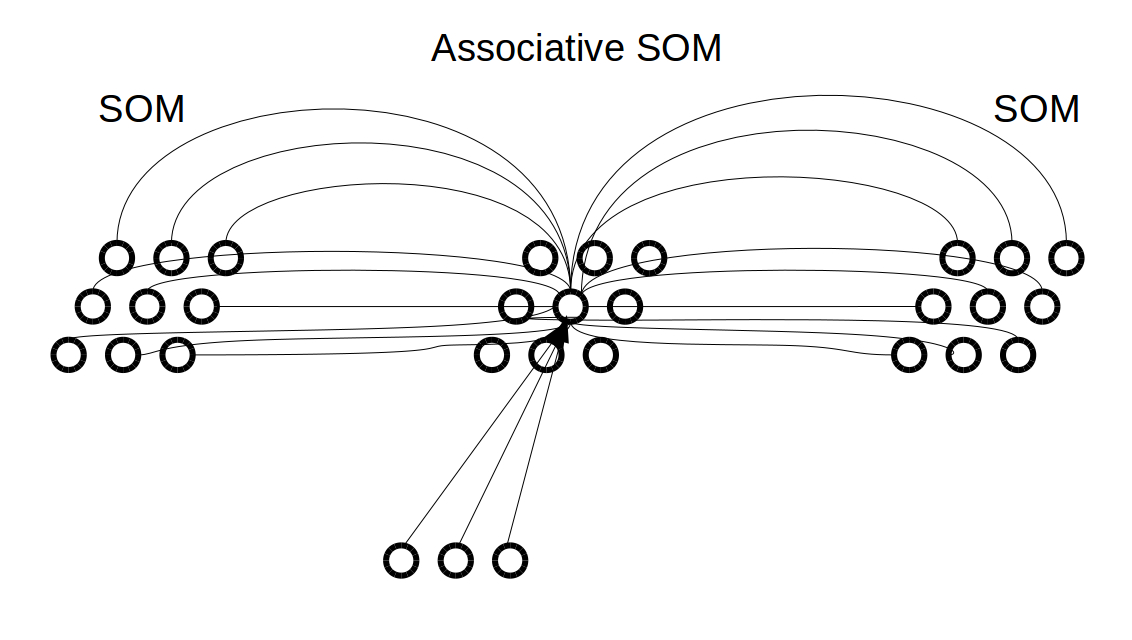
Magnus Johnsson
Cognitive Scientist, Computer Scientist
Associative Self-Organizing Map
A self-organizing map is an unsupervised artificial neural network invented by Teuvo Kohonen that consists of a matrix of artificial neurons that after a learning phase can represent a certain type of stimulus in an orderly manner. For example, by exposition to a variety of colours, it can learn to represent these so that all blue shades are arranged in a certain part of the map, while all green and yellow lays represented in other parts. The transitions in the representations are gradual.
I have invented an extended variant of the self-organizing map called the associative self-organizing map. This was first created to be used as a building block, which roughly models a cortical area in the brain, in artificial cognitive architectures. An associative self-organizing map can learn to associate the activity in its self-organized representation of input data with arbitrarily many sets of parallel inputs and with arbitrarily long time delays. For example, it can learn to associate its activity with the activity of other self-organization maps, as shown in the image below, or with its own activity at one or more earlier times. This allows for cross-modal expectations. For example, if a sensory modality, say the visual system in a cognitive architecture, produces a certain internal pattern of activity due to sensory input, then activity patterns are elicited in other sensory modalities corresponding to the patterns of activity that are often triggered in these other sensory modalities through sensory inputs that usually occur simultaneously, even when they do not. Due to the ability of the associative self-organizing map to associate its activity with its own activity at one or more earlier times, a mechanism for sequence completion that can be used for internal simulation is made possible.

The associative self-organizing map has been successfully tested in many simulations in several different domains as well as together with real sensors like tactile sensors and cameras. This has firmly proved its capacity for sequence completion and cross-modal expectations. A more mature version of the associative self-organizing map with generalized ancillary connections for increased representational capacity has also been implemented and tested with very encouraging result in the domain of music in simulations of the continuation of partly heard melodies.
Some Related Publications
Johnsson, M., Martinsson, M., Gil, D. and Hesslow, G. (2011). Associative Self-Organizing Map. In Mwasiagi, J.I. (Ed), Self Organising Maps - Applications and Novel Algorithm Design, InTech, 603-626. ISBN: 978-953-307-546-4.
Johnsson, M., Balkenius, C., and Hesslow, G. (2009). Associative Self-Organizing Map. In the proceedings of the International Joint Conference on Computational Intelligence (IJCCI) 2009, Funchal, Madeira, Portugal, 363-370.